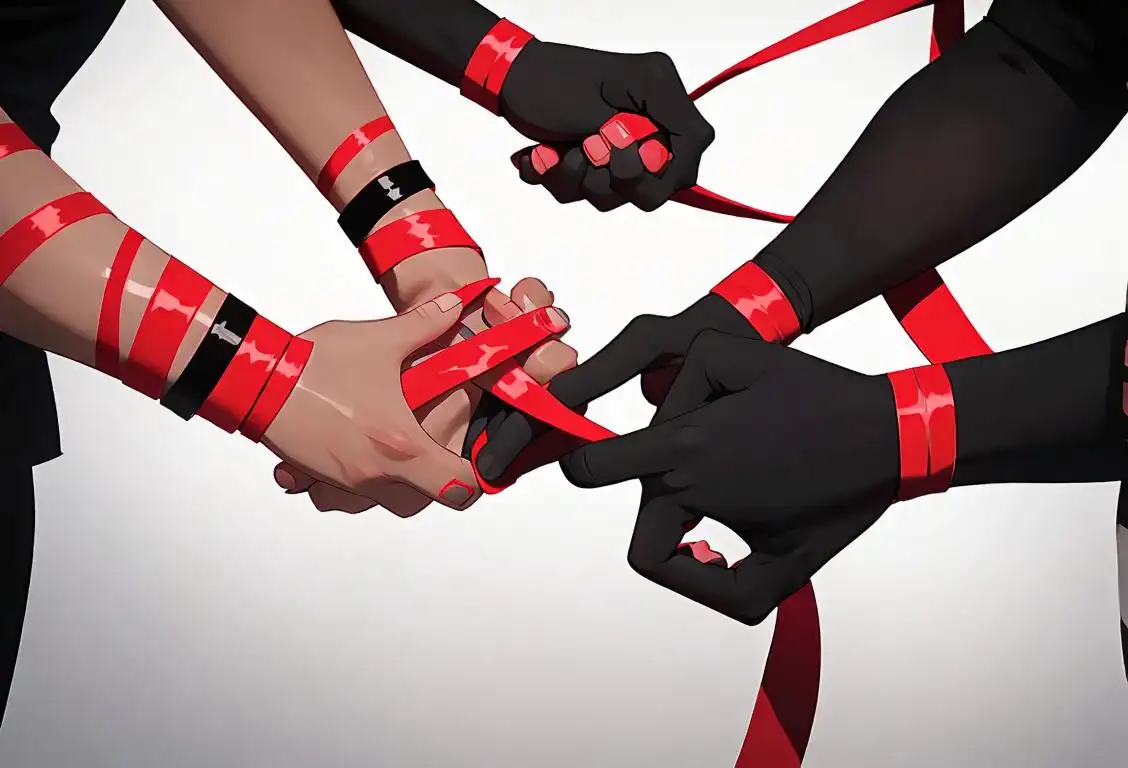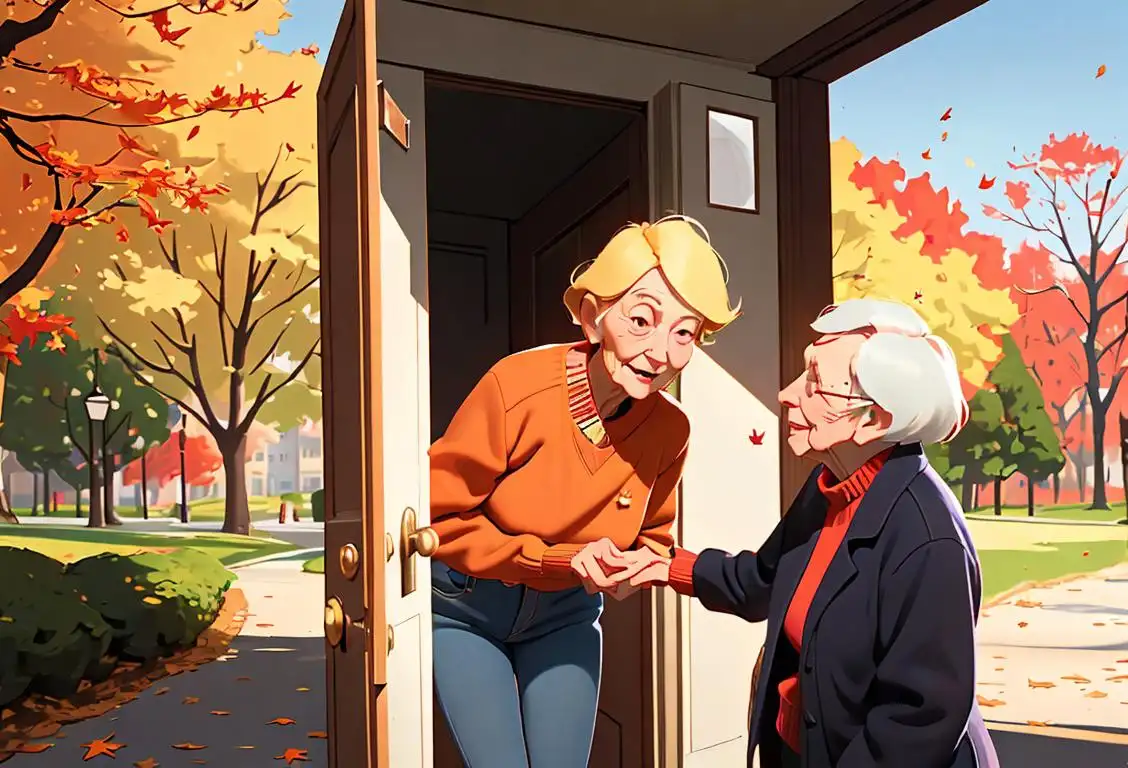National Penpal Day

Hey there, penpal enthusiasts! It's time to whip out those pens and paper because National Penpal Day is here! Get ready to connect with people from all over the world and make some snail mail magic happen.
When is Penpal Day?
It's national penpal day on the 1st June.
The Internet Penpal Phenomenon
Back in the olden days, before Facebook and Snapchat took over our lives, people used to communicate through writing letters. Penpals were like long-distance BFFs, exchanging thoughts, stories, and the occasional gift through the mail. Then, the internet came along and everything changed.
With the advent of social media and email, penpals were swept aside like forgotten email attachments. But fear not, National Penpal Day is here to inspire a revival of this timeless tradition!
The Power of a Handwritten Letter
In a world of instant messaging and emoji-filled conversations, taking the time to write a letter can feel like a lost art. However, the impact of a handwritten letter is truly magical. It shows effort, sincerity, and a connection that transcends the digital realm.
By participating in National Penpal Day, you can experience the joy of finding a letter in your mailbox, filled with someone's thoughts and dreams. It's like opening a tiny window into their world, and it's an experience that can't be matched by a text message or a DM.
How to Get Involved
Ready to dive into the world of penpals? Here's how you can participate in National Penpal Day:
- Reach out to friends, family, or even strangers who have expressed an interest in having a penpal.
- Be creative with your letter-writing skills. Use colorful stationery, cute stickers, or even a wax seal for an extra touch of nostalgia.
- Introduce yourself and share a bit about your interests, hobbies, and life. Pour your heart onto paper!
- Remember to keep the conversation going by responding promptly to your penpal's letters.
- Embrace the surprises that come with penpalling, whether it's a collection of foreign stamps or a sweet treat hidden inside your letter.
Did You Know?
In the digital age, there are still dedicated penpal communities online where you can connect with people who share similar interests. So even if you don't have a pen and paper, you can still embrace the spirit of National Penpal Day and make friends from around the globe!
History behind the term 'Penpal'
1930
The Birth of Penpals
The term 'penpal' originated in the 1930s as a combination of two words: 'pen,' referring to the writing instrument and 'pal,' which means friend. During this time, letter writing was a popular means of communication, and many people sought to connect with others through written correspondence. The concept of having a penpal involved exchanging letters with someone from a different place or culture, fostering friendships and learning about different ways of life.
1930
Inception of the term
In 1930, the term 'penpal' was first used to describe the act of exchanging letters with someone who resides in a different location. The word 'pen' refers to the writing instrument, commonly used at the time, while 'pal' denotes a friend or companion. Combining the two, 'penpal' emerged as a label for individuals who formed friendships through written correspondence.
1930
The Birth of Penpals
The term 'penpal' originated in the 1930s when people started exchanging letters with friends and acquaintances in other cities or countries on a regular basis. The word 'pen' in 'penpal' refers to the writing implement, while 'pal' is a term used to refer to a friend. Penpals became increasingly popular as a means of fostering connections and cultural exchange.
1938
The Birth of Penpals
The term 'penpal' originated in 1938. It was derived from the combination of the words 'pen' and 'pal.' In this era, people used to correspond with each other through handwritten letters, using pen and paper. The concept of having a penpal was popularized as a means of forging new friendships and fostering cultural exchange.
1930
The Birth of Penpals
The term 'penpal' originated in the 1930s when advances in transportation and communication made it easier for people to correspond with one another across long distances. It was during this time that the idea of finding a penpal, a person with whom one could exchange letters and thoughts, began to gain popularity. The term 'penpal' itself is a combination of 'pen' (referring to the writing instrument) and 'pal' (meaning friend or companion).
1940s
Rise in popularity among servicemen
During the 1940s, the term 'penpal' gained significant popularity among servicemen serving in World War II. Soldiers stationed abroad often sought companionship and connection with individuals back home, leading to a surge in penpal relationships. These correspondences played a crucial role in boosting morale and providing emotional support during times of war.
1950
Growing Popularity through Snail Mail
By the 1950s, the concept of penpals had become widespread and was often encouraged as a way to foster international friendships and cultural exchange. Snail mail was the primary mode of communication, with both children and adults eagerly seeking penpals from different countries in an effort to learn about new cultures and make new friends. It was a time-consuming but rewarding process, with letters sometimes taking weeks or even months to reach their destinations.
1940s
World War II and Penpals
The popularity of penpals soared during World War II. Many soldiers stationed overseas sought companionship and support through letter writing. It was a way for them to maintain a connection with home and share their experiences. Furthermore, people on the home front also engaged in writing letters to boost the morale of soldiers. The exchange of letters between penpals helped foster empathy and understanding across borders, showcasing the power of written communication in bringing people together in times of hardship.
1950
Penpals in School Curriculum
By the 1950s, schools around the world recognized the educational benefits of penpal programs. Teachers incorporated penpal correspondence into their curriculum to develop students' writing skills, promote cultural understanding, and create global friendships. Students eagerly awaited letters from their penpals, often sharing details about their countries, cultures, and personal experiences.
1940s
Post-War Penpals Flourish
During the 1940s, the idea of penpals gained significant momentum, especially after World War II. Many soldiers who were deployed overseas developed friendships with individuals they corresponded with through letters. This experience not only helped boost morale but also allowed both parties to gain cultural insights and establish lasting connections from different parts of the world.
1950s
Educational initiative
In the 1950s, penpals began to be incorporated as part of educational initiatives. Teachers recognized the value of fostering cross-cultural understanding, improving language skills, and expanding horizons through letter exchanges between students in different regions or countries. Penpals became a means of promoting global awareness and cultural exchange within educational institutions.
1970
Penpals in Pop Culture
During the 1970s, penpals gained recognition and popularity in pop culture. The idea of connecting with a penpal from a different background or culture intrigued both young and older individuals alike. Movies, books, and songs depicted the excitement and adventures that came with having a penpal, further contributing to the fascination with this form of communication.
1960s-1980s
Schools and Snail Mail
In the 1960s to 1980s, the practice of penpalling became particularly prevalent in schools. Teachers understood the educational benefits of connecting students from different countries and encouraging cross-cultural understanding. Students eagerly awaited receiving letters and would respond by mail, often waiting weeks for a reply. Snail mail was the primary mode of correspondence during this time.
1990
The Digital Era and Online Penpals
With the advent of the internet in the 1990s, the world of penpals underwent a significant transformation. The rise of email and instant messaging enabled people from all corners of the globe to connect instantly and effortlessly. Websites dedicated to matching individuals looking for penpals sprouted up, making it easier than ever to find someone with similar interests or from a specific country. The term 'penpal' also expanded its meaning to include online friends with whom people could share their thoughts and experiences.
1960s
School Penpal Programs
In the 1960s, the concept of penpals was incorporated into educational settings, particularly through school programs. These programs aimed to promote cultural exchange and understanding among students. Schools would match students with penpals from different countries, allowing them to learn about different cultures, traditions, and languages. Writing letters to their penpals became an exciting educational experience, broadening their global perspective and fostering lifelong friendships.
1995
Penpal Websites Emerge
With the rise of the internet in the mid-1990s, penpals entered a new era. Dedicated websites emerged, offering platforms for people to find and connect with penpals from all over the world. These websites provided a convenient way to exchange messages and build friendships in an increasingly globalized world. The internet enabled individuals to expand their networks and connect with people they may have never had the opportunity to meet otherwise.
2005
Evolution of Penpals to Social Media
In the mid-2000s, as social media platforms like Facebook and Twitter gained popularity, the concept of penpals continued to evolve. While traditional letter writing and email correspondence still held importance, social media allowed for more immediate and interactive communication. Penpals could now share photos, videos, and updates about their daily lives in real-time, fostering an even greater sense of connection.
Internet Age
Digital Penpals and Online Communities
With the advent of the internet in the late 20th century and the rise of social networking platforms, the concept of penpals evolved further. Online communities emerged where people could connect with others from around the world through email, instant messaging, and forums. Digital penpals became popular, allowing for faster and more convenient communication. While the traditional letter writing may have started to decline, the essence of penpals as fostering connections and learning about different cultures persisted in the digital era.
1990s
Digital revolution and online penpals
With the advent of the internet and the rise of electronic communication in the 1990s, the concept of penpals expanded into the realm of online friendships. Virtual platforms and specialized websites emerged, connecting people from all over the world with shared interests and values. Online penpals allowed for immediate and convenient communication, transcending physical boundaries and greatly increasing the accessibility and reach of penpal relationships.
1990s
The Digital Transformation
With the advent of the internet in the 1990s, the concept of penpals underwent a transformation. Email and online chat platforms emerged as popular alternatives to traditional mail. Individuals could now connect with people from around the world instantly and exchange messages in real-time. Despite the shift to digital communication, the term 'penpal' continued to be used, albeit in a more encompassing manner.
2010
Digital Penpalling and Social Media
In recent years, penpalling has embraced digital platforms, including email, instant messaging, and social media. While traditional letter-writing still holds charm, digital penpalling allows for immediate communication and facilitates interactions between penpals across continents. Social media platforms have also played a role in connecting individuals interested in finding penpals, creating thriving online communities centered around friendship and cultural exchange.
Present
Expanding Penpals in the Digital Age
Today, the term 'penpal' encompasses a wide range of communication methods and spans across various platforms. People can connect with penpals through email, social media, online forums, and even specialized penpal apps. While the world has become more interconnected, the desire to form meaningful connections and learn about different cultures remains as strong as ever.
Present Day
Modern Penpals
In the present day, penpals still exist, but they have evolved to include various forms of communication. Social media platforms, language exchange apps, and dedicated penpal websites have allowed individuals to connect with others across borders effortlessly. People now have the opportunity to interact with a global community, fostering friendships, exchanging culture, and broadening their horizons, all through the modern incarnation of the traditional penpal concept.
Present
Evolution of penpal culture
In the present day, the term 'penpal' continues to persist, albeit in a more diverse and interconnected form. While traditional penpal relationships still thrive through handwritten letters, the digital age has lead to a variety of hybrid interactions. Online messaging, email, social media, and video chats have become integral methods for maintaining penpal connections. Today, the significance of penpals goes beyond correspondence, fostering empathy, cultural understanding, and providing a window into different parts of the world.
Did you know?
Did you know that having a penpal can improve your writing skills, boost your creativity, and even reduce stress? It's like a real-life version of Hogwarts owl post!Tagged
romance fun loved ones NSFWFirst identified
1st June 2015Most mentioned on
1st June 2015Total mentions
13Other days
Penpal Day
Harbor On Its First Day
Black Hiv And Aids Awareness Day
Booty Appreciation Day
Kiss A Ginger Day
Iloveyou Day
Do Something Nice Day
Tv On The Same Day
Kissing Fried Chicken Day
Happiness Day








